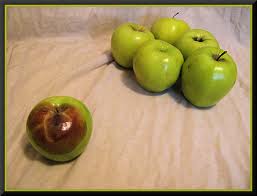 Here is a scenario for you . . . a somewhat famous actor dies and his family decides to make a memorial contribution to the deceased’s college alma mater and establish a scholarship fund. In setting up the fund, the family outlines their wishes that the annual scholarship be awarded to someone with an interest in poetry who exhibits an economic need.
Here is a scenario for you . . . a somewhat famous actor dies and his family decides to make a memorial contribution to the deceased’s college alma mater and establish a scholarship fund. In setting up the fund, the family outlines their wishes that the annual scholarship be awarded to someone with an interest in poetry who exhibits an economic need.
What do you do? Honor the family’s wishes or use the scholarship however you see fit?
In this scenario, the college awarded the scholarship to someone disinterested in the arts who came from a family who could’ve written one check for their daughter’s enter four-year undergraduate education. Would you believe this is a real life story that just happened?
When I heard the story from the deceased’s living relatives, my heart shattered into a million small pieces. This was their beloved’s legacy. The family had a philanthropic wish and the resource development people weren’t up to the task of making that dream come true.
This is what gives resource development folks a bad name regardless of what non-profit sector you work in. The reality is this family is now less likely to respond to anyone’s charitable giving appeal. Even more damaging is this family is wandering the countryside telling anyone who will listen (and I was one of those people) that fundraising professionals are crooks and the equivalent of unethical used car salespeople.
I know many of you are currently thinking this would never happen in your organization . . . but are you sure? Are you on every solicitation call with your volunteers? In my experience, many social service non-profit organizations don’t possess the written policies or use the appropriate gift agreement forms to document restrictions. While organizational capacity is often to blame, the reality is that many volunteer solicitors are also not well-trained to recognize gift restrictions and aren’t trained to know what to do when they encounter one.
Here are just a few tips you might consider in order to become more donor-centered and avoid giving our entire profession a bad name:
- Engage a resource development audit using an external consultant and ask them as part of that project to keep an eye open for gaps in your written gift acceptance, gift acknowledgement, and resource development policies and procedures. If these documents don’t exist, then engage donors and volunteers to help you write them.
- Organize an annual focus group of LYBUNT donors and explore reasons for their inactivity. You might be surprised at what you find.
- Develop a donor’s bill of rights and post it to your website. Connect this to a whistleblower policy so that donors can bypass those who “did them wrong” when they call and try to get some justice.
- Include in your annual campaign kickoff a training segment designed to teach volunteers how to recognize when a donor is trying to “restrict” their contribution and how to respond to/deal with such a request.
Stewardship begins before a gift is even received. You should have written policies and procedures in place to guide how gifts will be accepted, acknowledged and to ensure the contribution is spent as the donor wishes. Finally, stewardship is about reporting back to the donor in a meaningful way that shows you care about the donor.
If we don’t clean-up our profession, then we’ll find ourselves channeling this song from the Osmond family more and more.
Are you confident in your organization’s written policies? If so, please share a link in the comment box below so everyone can compare. Do you train your volunteers in what to do or say when confronted with a donor who wants to make a restricted gift? When do you conduct that training? How do you instruct them to handle the situation. Please use the comment box and share your thoughts, practices and stories because we can all learn from each other.
Here is to your health!
Erik Anderson
Founder & President, The Healthy Non-Profit LLC
www.thehealthynonprofit.com
erik@thehealthynonprofit.com
http://twitter.com/#!/eanderson847
http://www.facebook.com/eanderson847|
http://www.linkedin.com/in/erikanderson847







